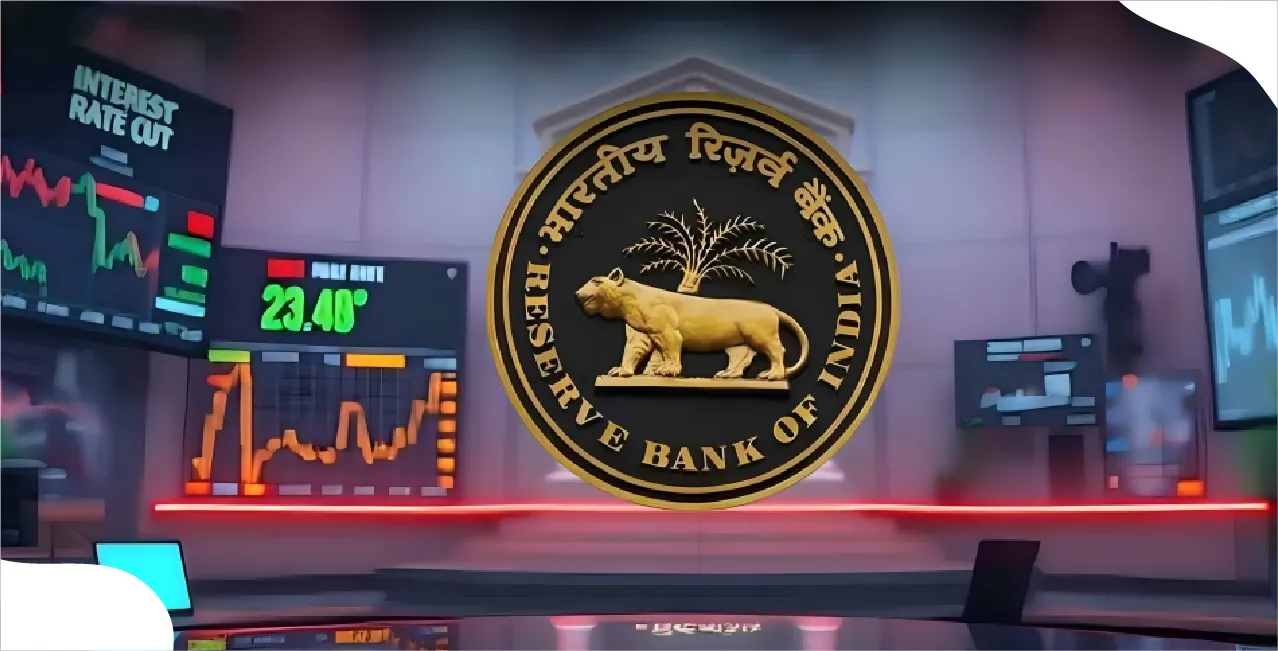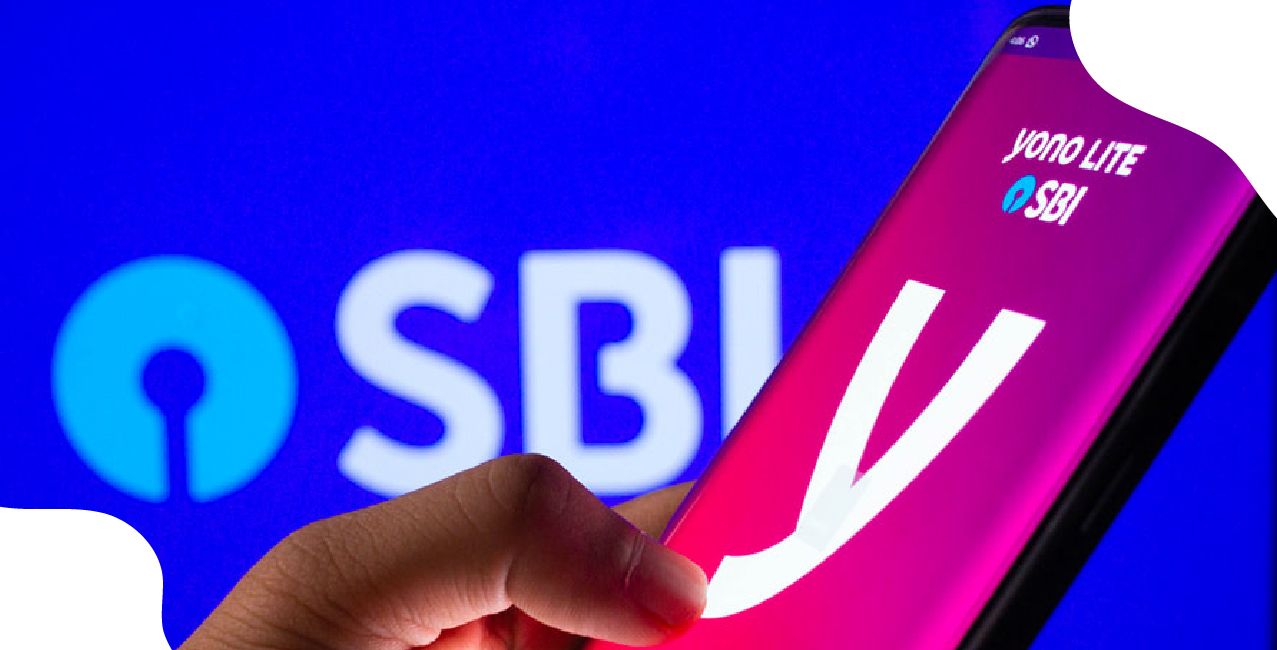
Author
LoansJagat Team
Read Time
6 Min
02 Aug 2025
What is Reverse Repo Rate? Meaning, Difference from Repo Rate & RBI Role
The Reverse Repo Rate is the rate at which the Reserve Bank of India borrows money from commercial banks for short durations. It helps regulate liquidity in the economy, especially when there's excess cash circulating in the banking system.
Meet Kavita Sharma, a 32-year-old banking analyst in Mumbai earning ₹12,00,000 per year. In April 2025, she noticed that her bank slashed the fixed deposit (FD) interest rate from 6.75% to 6.25%, affecting not just her ₹5 lakh savings but also those of thousands of retail customers. Curious, she dug into RBI’s recent monetary announcements and found that the Reverse Repo Rate had been reduced from 3.50% to 3.25% in March 2025.
This 25 basis point (bps) cut meant her bank would now earn ₹1.25 crore less per ₹500 crore parked with the RBI annually. To offset this, the bank nudged customers toward spending or investing by making FDs less attractive and loan products more competitive.
“Ab tera kya hoga, fixed deposit?” she chuckled, echoing Sholay’s sarcasm. One small RBI tweak, just 0.25%, suddenly explained why her bank was pushing credit cards and SIPs harder than ever before.
This blog breaks down the meaning of reverse repo rate, how it differs from repo rate, the role of the RBI, and the impact on banks, loans, EMIs, and even your fixed deposit.
What is the Reverse Repo Rate?
The Reverse Repo Rate is the rate at which the RBI borrows money from banks for a short time. Currently, the Reverse Repo rate is 3.35%. Think of it like a tool the RBI uses to take back extra money from the market. It is always lower than the Repo Rate, so banks usually prefer lending money to people instead of keeping it with the RBI.
But when there's too much money in the market, called excess liquidity, the RBI increases the Reverse Repo Rate. This makes banks keep more money with the RBI and give fewer loans to customers. It helps control inflation.
Example: When Ramesh Verma, a 42-year-old senior banker at a private bank in Chennai, saw inflation rise to 5.8% in May 2025 from 5.2% in April, he expected the RBI to respond. It did. The Reverse Repo Rate was raised from 3.25% to 3.50% in June 2025.
His bank had ₹3,000 crore parked with the RBI, earning ₹97.5 crore annually at 3.25%. With the new rate, earnings jumped to ₹105 crore, a ₹7.5 crore increase just for keeping funds idle.
To make the most of this, the bank cut personal loan disbursements by ₹500 crore that quarter and increased its investment in government securities by 10%. Lending slowed, money supply tightened, and spending in sectors like auto and real estate cooled down.
Ramesh smiled and told his team, “Picture abhi baaki hai mere dost,” hinting at more changes if inflation kept rising.
How Does the Reverse Repo Rate Work?
RBI borrows money from commercial banks by offering them a fixed interest rate. This helps to pull back extra cash from the system and slows down spending. It is a way to control inflation without directly touching people’s wallets.
For Example: In May 2025, Sneha Jaiswal, a 35-year-old equity trader in Pune, saw signs that inflation was heating up. Prices of daily items had jumped by 6.1%, and the RBI was expected to react. In June 2025, it did, the Reverse Repo Rate increased from 3.25% to 3.50%, a rise of 25 basis points.
Read More – How Much EMI Will You Save After RBI Repo Rate Cut in February 2025?
Sneha’s bank had around ₹2,000 crore in surplus funds. Earlier, it earned ₹65 crore yearly from the RBI at 3.25%. After the rate hike, it earned ₹70 crore, gaining an extra ₹5 crore without any risk. Because of this change, the bank paused new investment offers, delayed loans, and directed funds back to the RBI for a safer return.
Repo Rate vs Reverse Repo Rate
Both rates are used by the RBI to manage the economy. Repo Rate helps control inflation, whereas Reverse Repo Rate helps control extra money in the market (liquidity).
Example: Ankit Mehra, an MBA student in Delhi, shared during his internship that banks borrow money from RBI at the Repo Rate and park extra funds with RBI at the Reverse Repo Rate.
In June 2025, the Repo Rate was 5.50% and the Reverse Repo Rate was 3.50%. This 2% gap helped RBI guide how banks should use their money, either lend to people or save with RBI, depending on the market situation.
Repo Rate vs Reverse Repo Rate (June 2025)
RBI’s Role in Managing Reverse Repo Rate
The Reserve Bank of India (RBI) revises the reverse repo rate during its Monetary Policy Committee (MPC) meetings. These revisions are based on various economic indicators like market liquidity, inflation levels, GDP growth, and overall financial stability. As the sole authority managing this rate, the RBI uses it to absorb excess liquidity and maintain balance in the banking system.
Example: During the 2020 pandemic, the RBI reduced the reverse repo rate to 3.35%, aiming to push banks to lend more rather than park funds with the central bank. Economist Lakshmi Rajan, then 50, noted that the RBI’s move echoed the famous line, “Dosti ka ek usool hai madam no sorry, no thank you”, as the central bank offered silent support without demanding anything in return.
RBI Monetary Tools and Their Purpose
Impact of Reverse Repo Rate on Loans, FDs & Savings
When the reverse repo rate is high, banks are more inclined to park surplus funds with the RBI instead of lending to customers. This leads to reduced credit availability, slower loan disbursal, and sometimes lower interest rates on deposits. Conversely, when the rate is low, banks tend to lend more, boosting liquidity in the market.
Also Read - The Mechanics of Interest Rate Changes: How Central Banks Influence the Economy
Example: Rohit Khanna, a startup founder from Bengaluru, applied for a business loan in May 2025. Following the RBI’s reverse repo rate hike to 3.35%, his bank began holding funds with the RBI to earn assured returns, delaying and tightening credit for SMEs like his.
Impact of Reverse Repo Rate on Financial Products
This rate is a key monetary tool that directly affects your borrowing costs and returns on savings.
Why Does the Reverse Repo Rate Always Stay Lower Than the Repo Rate?
The Reverse Repo Rate is kept lower than the Repo Rate to ensure banks continue lending to the public rather than depositing surplus funds with the Reserve Bank of India. If both rates were equal or reversed, banks would prefer parking funds with the RBI for risk-free returns, which would reduce the flow of credit in the economy. By maintaining this gap, RBI promotes active lending, business growth, and consumer spending, all essential for economic expansion.
Example: During a classroom quiz in March 2025, Priya Saxena, a finance student, answered, “The reverse repo rate is lower, so banks don’t avoid lending.” Her professor nodded, replying, “Tumse na ho payega”, to others who missed the logic.
Conclusion:
The Reverse Repo Rate may sound technical, but it directly affects our loans, savings, and investments. Whether you’re a banker or a common investor, knowing how this rate works helps you stay ahead of financial decisions. Just like movie dialogues that become timeless, these rates keep playing in the background of India’s economy
FAQ:
1. What is the current reverse repo rate in India?
As of June 2025, the reverse repo rate is 3.35%.
2. How is the reverse repo rate different from the repo rate?
A reverse repo is when banks lend to the RBI; a repo is when the RBI lends to banks. The reverse repo is always lower.
3. Who decides the reverse repo rate?
The Reserve Bank of India (RBI), in its Monetary Policy Committee (MPC) meetings, decides it.
4. How does a change in reverse repo affect me?
A high reverse repo discourages banks from giving loans. So your loan approval or FD rates might change.
5. Why should fintech companies track the reverse repo rate?
It affects liquidity in the system, which can impact credit availability, lending models, and customer borrowing trends.
Other Informative Pages | |||
About the Author

LoansJagat Team
‘Simplify Finance for Everyone.’ This is the common goal of our team, as we try to explain any topic with relatable examples. From personal to business finance, managing EMIs to becoming debt-free, we do extensive research on each and every parameter, so you don’t have to. Scroll up and have a look at what 15+ years of experience in the BFSI sector looks like.

Quick Apply Loan
Subscribe Now


